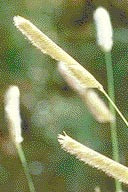 Loading... Please wait...
Loading... Please wait...- Home
- SEEDS
- SEED MIXES
- BUY PLANTS
- Info Request
-
Educational Videos
- Greenhouse Transplanting Demonstration
- Native Seed Cleaning demonstration at Ion Exchange Native Seed and Plant Nursery
- Attracting Butterflies
- Bidens - Bidens cernua Harvest Video
- Big Blue Stem Harvest
- Butterfly Milkweed Video
- Button Blazingstar - Liatris aspera Video
- Buttonbush - Cephalanthus occidentalis Video
- Canada Anemone - Anemone canadensis Harvest Video
- Cardinal Flower - Lobelia cardinalis Video
- Control Burn - Wildflower Field
- Cream Gentian - Gentiana flavida
- Culver's Root - Veronicastrum virginicum Video
- Cup Plant - Silphium perfoliatum Video
- Dormant Seeding | Planting
- Earthyman's Favorite Wildflowers Video
- Eco-Friendly Golf Course Seed Mix
- Floating Islands
- Fringed Loosestrife - Lysimachia ciliata Video
- Giant Yellow Hyssop - Agastache nepetoides Video
- Indiangrass - Sorghastrum nutans Video
- Iowa Prairie Partner Program
- Leadplant - Amorpha canescens (Potted) Video
- Meadow Blazingstar - Liatris ligulistylis
- Midland Shooting Stars - Dodecatheon meadii Video
- Native Plant Nursery Field Irrigation Experiment
- Nodding Onion - Allium cernuum Video
- Ohio spiderwort - Tradescantia ohiensis Video
- Old Man's Beard - Clematis virginiana blooms Video
- Oxeye Sunflower - Heliopsis helianthoides Video
- Prairie Spiderwort - Tradescantia bracteata
- Purple Coneflower - Echinacea purpurea Video
- Rain Garden or Water Garden Video
- Rattlesnake Master - Eryngium yuccifolium Video
- Riverbank Stabilization - Wetland Plants
- Rose Mallow - Hibiscus militaris Video
- Rosinweed - Silphium integrifolium Video
- Royal Catchfly - Silene regia
- Showy Tick Trefoil - Desmodium canadense Video
- Sneezeweed - Helenium autumnale Video
- Swamp Betony - Pedicularis lanceolata Video
- Swamp Milkweed - Asclepias incarnata Video
- Sweet Blackeyed Susan - Rudbeckia subtomentosa Video
- Tall Coreopsis - Coreopsis tripteris Video
- Urban Butterfly Garden
- Wild Bergamot - Monarda fistulosa Video
- Wild Geranium - Geranium maculatum Harvest
- Wild Goldenglow - Rudbeckia lanciniata Video
- Wild Petunia - Ruellia humilis Harvest Video
- Woodland Knotweed - Polygonum virginianum Video
- Yellow Coneflower - Ratibida pinnata Video
- Blog
- Resources
- Policies
Contact Us
Phone:
563-419-0837
or 563-535-7231
Email:
hbright@ionXchange.com
Browse Products
Add to Wish List
You Recently Viewed...
Our Newsletter
Product Description
(PLS) Blue Grama (Bouteloua Curtipendula) is an important, drought-resistant, short grass in the mixed prairies and throughout the Great Plains and Southwest. It can be confused with Hairy grama Grass (B.hirusta), which is distinguished by a sharp point extending beyond the florets. A somewhat similar but shorter species, buffalo grass (Buchloe dactyloides), is usually less that 6" (15cm) high and is typical of dry short-grass plains.
| Sun Exposure | Prairie, Savanna |
| Soil Moisture | Dry Mesic, Dry |
| Bloom Time |
Perennial |
| Bloom Color | |
| Max Height | 1 feet |
| Wetland Code | UPL |
| Germ Code | A |
| Seeds Per Ounce | 40,000 |
Only 12-14 in. in full flower, this is among the shortest of the native grasses. It is fine-leaved and produces blue-green seedheads which are suspended horizontally like tiny brushes from the tip of each stem. The plant turns tan when dormant. Blue grama grows in bunches in the south, and as a sod-former in the north and at high elevations. It is a perennial.
This is an Important, drought-resistant, short grass in the mixed prairies and throughout the Great Plains and Southwest. It can be confused with Hairy grama Grass (B.hirusta), which is distinguished by a sharp point extending beyond the florets. A somewhat similar but shorter species, buffalo grass (Buchloe dactyloides), is usually less that 6" (15cm) high and is typical of dry short-grass plains.
Edible Uses: "Seed - raw or cooked. It can be ground into a powder, mixed with water and eaten as a mush, often with corn meal. It is also used to make bread.
Medicinal Uses: "The chewed roots have been applied to cuts. A decoction of the whole plant has been used as a post-partum medicine.
Other Uses: "The grass is sometimes used in the fill of coiled basketry. The stems can be used as a comb and broom material. The blades can be bundled by a cord and the stiff end used as a hair comb whilst the other end can be used as a broom."
Herbal Uses: Unknown













